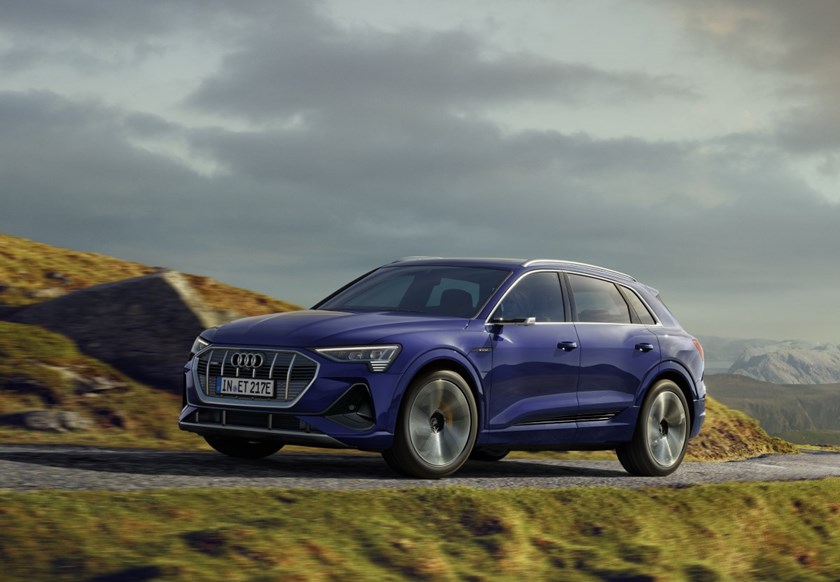Better efficiency and longer range: technical update for the Audi e-tron
Customers enjoy an extra 25 kilometers (15.5 mi) of range in the WLTP cycle

“Every detail counts” – that was the principle that engineers working on the Audi e-tron applied as they succeeded in extending its range yet further. Future versions of the Audi e-tron 55 quattro** will be able to drive for up to 436 kilometers (270.9 mi) on a full battery charge (WLTP cycle), which is an additional 25 kilometers (15.5 mi) over its previous capability. Thanks to a new type of wheel brake, the developers have achieved further reductions in what is known as residual brake torque. This refers to losses that occur as a result of the proximity of the brake calipers to the brake discs. The drive system has also become more efficient. In normal driving, the motor on the rear axle provides propulsion as standard. Now, thanks to a number of optimizations, the front electric motor is almost entirely disengaged and disconnected from the electricity supply. Only when the driver requests more power do both motors spring into action. Running without power or drag losses, the major advantage of the asynchronous motor concept, is even more effective as a result. In addition, the usable range of the high-voltage battery has increased. The battery in the Audi e-tron 55 quattro** has a total capacity of 95 kWh and now gives customers access to a net power figure of 86.5 kWh. All newly produced models will benefit from the technical upgrade. There is no change to prices for the Audi e-tron 55 quattro**, which start at €80,900.
Highly efficient thermal management
The engineers have also made improvements to cooling. The highly flexible thermal management system, which comprises four separate circuits, has been revised and now regulates the temperature of the high-voltage components even more efficiently. Volume flows in the coolant circuit have been reduced, which means that the pump uses less power. The sophisticated cooling system continues to guarantee rapid DC charging, a long battery life cycle and reproducible performance even under heavy loads. The standard heat pump harnesses waste heat from the high-voltage battery to keep the interior warm. Depending on the outside temperature, that can boost the Audi e-tron’s range by up to ten percent in customer operation.
Improved coasting recuperation
The innovative recuperation system contributes to up to 30 percent of overall range. The Audi e-tron can recover energy in two ways: by means of coasting recuperation when the driver releases the accelerator, or by means of braking recuperation when the brake pedal is depressed. In both cases, the electric motors function as generators and convert kinetic energy into electrical energy. During deceleration actions of up to 0.3 g – which applies to over 90 percent of such actions in everyday driving – the high-voltage battery is charged by the electric motors, which act as generators. The recuperation system provides for variable regulation of energy recuperation between both electric motors, both in coasting mode and during braking. The degree of coasting recuperation can be set to any of three stages by means of paddles on the steering wheel, and there are now greater distinctions between the three, which allows the driver the option of a more pronounced “one-pedal feeling.” When braking from 100 km/h (62.1 mph), the Audi e-tron can recuperate up to 300 Nm (221.3 lb-ft) and 220 kW. That corresponds to more than 70 percent of its operating energy input.



